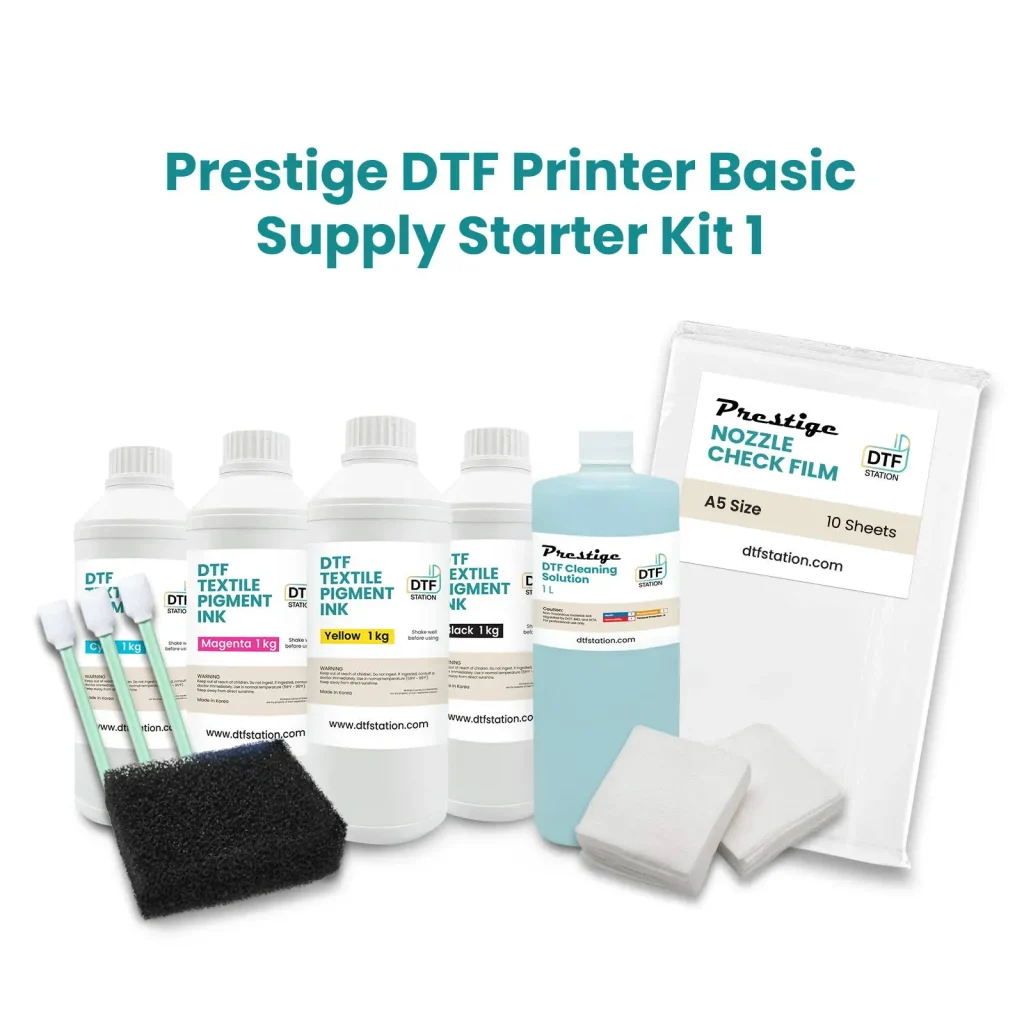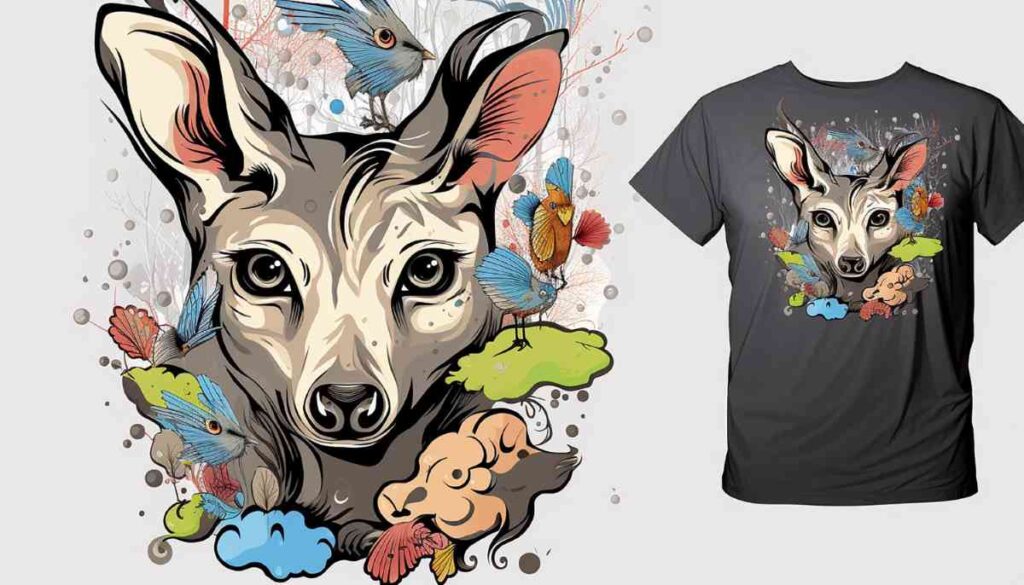DTF supplies are essential for anyone looking to excel in the world of Direct to Film (DTF) printing, a method that’s gaining momentum in garment decoration. These supplies not only streamline the printing process but also ensure the final output meets high-quality standards. From DTF films to inks, selecting the right materials is crucial for achieving vibrant prints and long-lasting results. Furthermore, mastering the heat press settings plays a pivotal role in enhancing print quality, making it easier to apply stunning designs onto various fabrics. In this guide, we will delve into comprehensive tips and techniques to effectively utilize DTF supplies, elevating your printing projects to new heights.
Direct to Film printing supplies, commonly referred to as DTF materials, have revolutionized how designers approach fabric decoration. These specialized products include transfer films and inks that are tailored for seamless application, allowing for intricate designs on garments. In addition to DTF supplies, the right settings for heat application significantly influence the durability and appearance of the prints. Beyond its immediacy, quality garment decoration with DTF techniques has become a popular choice for those seeking efficiency and superior results. By understanding the intricacies of these materials and processes, you can ensure that your printing projects stand out with exceptional vibrancy and detail.
Quality Matters: Selecting DTF Films and Inks
When diving into the world of Direct to Film (DTF) printing, quality is non-negotiable. Choosing top-notch DTF films and inks ensures vibrant, striking prints that will stand out. Brands like Coldesi and Avery Dennison are renowned for their robust offerings in the DTF space, catering to both novice and professional printers alike. The quality of films not only influences the print’s color fidelity, but also contributes significantly to the longevity of the designs on garments.
Subpar materials may lead to problems such as fading, cracking, or peeling of your prints, resulting in a disappointing final product. To avoid these issues, always verify that the films you purchase are intended specifically for DTF applications. Investing in premium supplies will yield better results and ultimately save you time and resources in remakes.
The Importance of Pre-Treatment in DTF Printing
Pre-treatment of fabrics is an essential step that many new practitioners overlook. This process can dramatically enhance adhesion and ultimately improve your overall print quality. By applying a specialized pre-treatment solution to your fabric, you prime it for better ink penetration, which is particularly beneficial for materials that typically resist ink adhesion such as polyester or nylon.
Without proper pre-treatment, you risk ending up with designs that look faded or wear off quickly after a few washes. This not only affects the garment’s visual appeal but can also impact customer satisfaction if you’re operating a printing business. Therefore, dedicating time to adequately prepare your fabrics ensures a more professional-looking finish and maximizes the durability of your DTF prints.
Optimizing Heat Press Settings for DTF Success
Getting your heat press settings just right is fundamental to achieving high-quality DTF prints. Generally, a temperature of around 320°F for a duration of 15-20 seconds is recommended, but variations may be necessary based on the specific fabric type and DTF films used. It’s crucial to consult the manufacturer’s guidelines to ensure optimal adhesion and quality, as deviating from recommended settings can lead to subpar results.
Additionally, using a consistent heat distribution across the entire transfer area will help in achieving uniform prints. A well-calibrated heat press also aids in eliminating issues like uneven prints, ensuring that your final product meets professional standards and delights your customers.
Mastering Application Techniques for DTF Transfers
The technique employed during the application of DTF transfers can substantially impact the success of your prints. Employing a steady, straight motion when transferring heat allows you to avoid any shifting of the film, which could lead to misaligned prints. A common recommended practice is to pre-press the garment to remove any moisture or wrinkles—a simple step that paves the way for a smooth and effective transfer.
By mastering application techniques, you not only improve the quality of your prints but also ensure consistency across different jobs. This level of professionalism is imperative in garment decoration, as clients will appreciate the detail and craftsmanship involved in the printing process.
Curing Transfers: Ensuring Longevity in DTF Prints
After the DTF transfer has been applied, proper curing is critical to ensuring that the design adheres well. Examine the edges and corners meticulously to verify that the transfer is fully secure. If you spot any loose areas, it’s important to reapply heat in those spots to ensure that the design fuses properly with the fabric, thereby extending the life of the print.
Proper curing will ensure that your prints withstand wear and multiple washes, keeping them vivid and intact over time. This attention to detail not only reflects your quality of work but also impacts customer satisfaction positively, encouraging repeat business and referrals for your services.
Storing DTF Supplies: Best Practices for Longevity
To maintain the quality and performance of your DTF supplies, proper storage is of utmost importance. DTF films and inks should be kept in a cool, dry place, shielded from dust and moisture, which can cause degradation. Environments that experience temperature fluctuations or high humidity can compromise the integrity of your materials, leading to printing issues that could have been easily avoided.
Integrating best practices for storage into your workflow can save you time and money in the long run, preventing spoilage and ensuring that your DTF printing process remains seamless and efficient. Good storage not only keeps your supplies in top condition but also helps maintain a consistent level of print quality across various projects.
Equipment Maintenance: The Key to Consistent DTF Results
To achieve consistent and high-quality DTF prints, regular maintenance of your printing equipment is essential. Schedule periodic cleanings and inspections to prevent issues like ink clogging or heat press malfunctions. A well-maintained printer and heat press should deliver reliable results and uphold the desired print quality that you and your customers expect over time.
Incorporating maintenance into your routine not only enhances the longevity of your equipment but also maximizes the efficiency of your DTF printing process. The last thing you want is to deal with unexpected breakdowns or poor print quality on crucial orders; investment in maintenance is an investment in your business’s reputation and profitability.
Frequently Asked Questions
What are the essential DTF supplies needed for successful DTF printing?
To achieve successful DTF printing, you will need high-quality DTF films, inks, and a reliable heat press. Additionally, a pre-treatment solution for fabrics and proper storage supplies are essential to maintain the quality of your DTF materials.
How do heat press settings affect DTF supplies during the printing process?
Heat press settings greatly impact the application of DTF supplies. Typically, you should set your heat press to approximately 320°F for 15-20 seconds. Adjusting these settings based on the fabric type ensures optimal ink adhesion and print quality.
Why is pre-treatment important when using DTF supplies for garment decoration?
Pre-treatment of garments enhances adhesion properties, allowing better ink penetration with DTF supplies. This step is crucial for achieving long-lasting prints, especially on fabrics that inherently resist ink adhesion.
How can I ensure the print quality of my DTF supplies?
To ensure high print quality with DTF supplies, start with premium quality DTF films and inks. Additionally, maintain proper heat press settings, pre-treat fabrics as needed, and follow correct application techniques to achieve vibrant, durable prints.
What is the best way to store DTF supplies to maintain their quality?
DTF supplies should be stored in a cool, dry, and dust-free environment. Avoid exposure to moisture or extreme temperatures, as these factors can degrade the quality of DTF films and inks over time.
What maintenance is required for my equipment when using DTF supplies?
Regular maintenance of your printers and heat presses is crucial for utilizing DTF supplies effectively. Schedule periodic cleanings and inspections to prevent clogs and ensure consistent performance for quality printing results.
| Tip | Description |
|---|---|
| Choose Quality DTF Films and Inks | Select high-quality DTF films and inks to ensure vibrant, durable prints. |
| Pre-Treatment of Fabrics | Pre-treat fabrics to enhance adhesion and print quality, especially for resistant materials. |
| Heat Press Settings | Apply heat at approximately 320°F for 15-20 seconds, adjusting as needed. |
| Proper Application Technique | Use steady, straight motions for applying heat, and pre-press to smooth surfaces. |
| Curing the Transfer | Inspect and reapply heat to ensure all areas are well adhered, improving durability. |
| Storage of Materials | Store DTF supplies in a cool, dry environment to prevent degradation. |
| Regular Maintenance of Equipment | Perform regular maintenance on printers and heat presses to ensure consistency. |
Summary
DTF supplies are essential for anyone looking to enhance their garment decoration projects through Direct to Film printing. By mastering the use of DTF supplies, which includes selecting quality films and inks, pre-treating fabrics, and following precise heat press settings, you can achieve vibrant and durable prints. Additionally, maintaining your equipment and storing your materials properly will further ensure that your DTF printing results are both stunning and long-lasting. With these practices, whether you are new to printing or an experienced user, you can optimize your DTF printing process effectively.



